THE CHAPEL DEDICATED TO SAINT NEVERWASTA
Ian Gosling,
Chair of Dorchester Civic Society
Some time ago a couple of Dorchester residents contacted me to tell me about a very important and, up to now, unknown monument they had been discovered shortly after they purchased their house in the town and had cleared the overgrown garden. Since it is situated in a secluded part at the end of that garden, they had not been shown it prior to their purchase of the property. They believe it to be the ruins of a medieval chapel built to commemorate a forgotten Dorset saint called St Neverwasta. Up to now they have preserved the secret of their find. However, because they were now advancing in years, they wished to confide their secret to someone who cared about the town’s heritage.
I was immediately intrigued since the only chapels I had heard about were the one in the former alms house in Napper’s Mite in South Street, dating from 1616 and therefore post-Reformation, and another chapel in the same street, long disappeared, which is said to have been dedicated to St Rumbold and which as early as 1404 was said to be ‘a sometime chapel’. I had also heard of a St Wite, also known by her Latin name of St Candida, whose tomb, containing her coffin, has been in the parish church of Whitchurch Canicorum since its construction in the 12th century.
I have recently visited the site in Dorchester and interviewed the owners. This is my report.
All that remains above ground is one gable end which contains a two-light window of typical Norman style. The owners have carried out some restoration and conservation work over the years, as is evident from the two photos I took of it (Photos 1and 2). 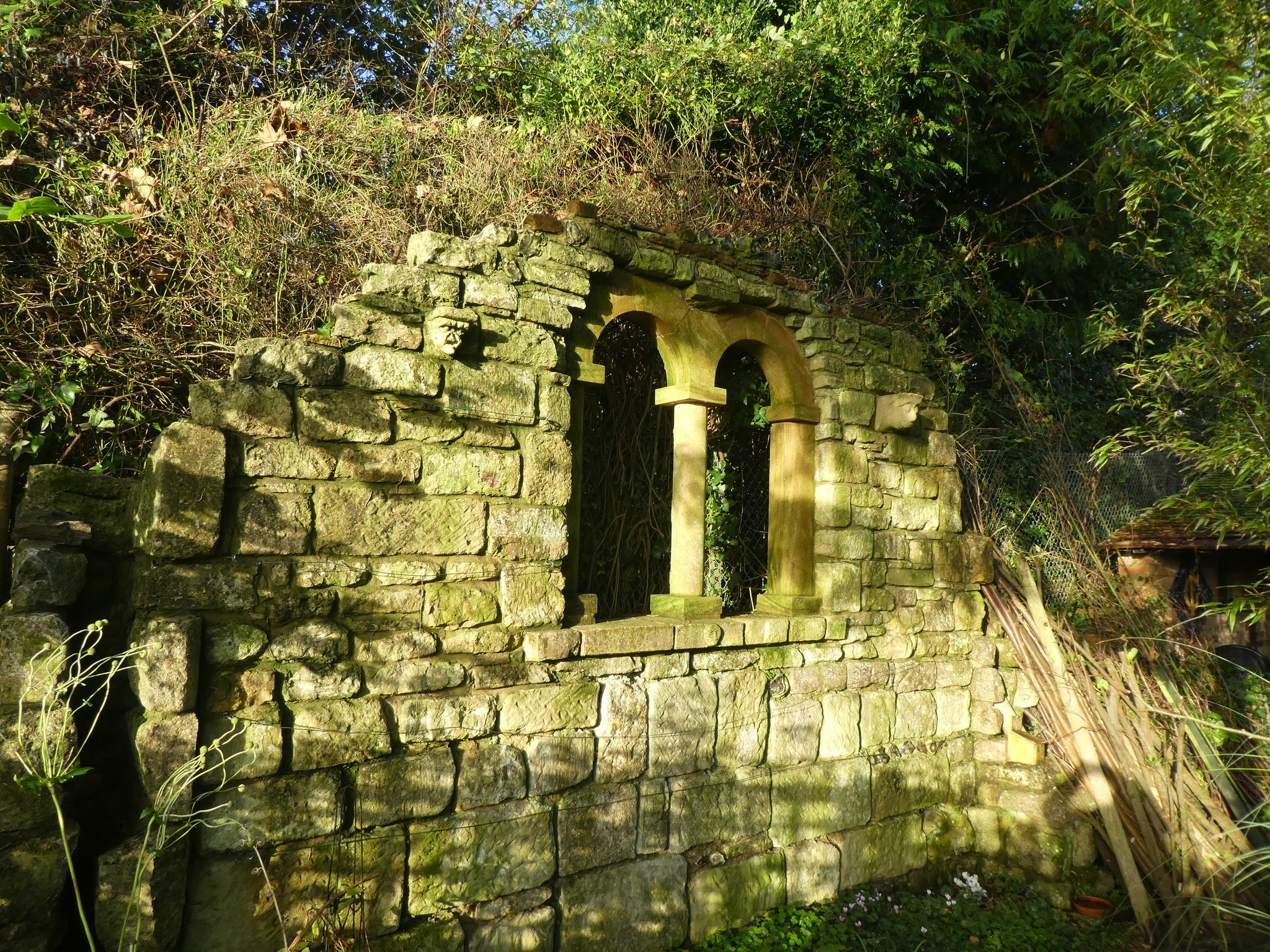
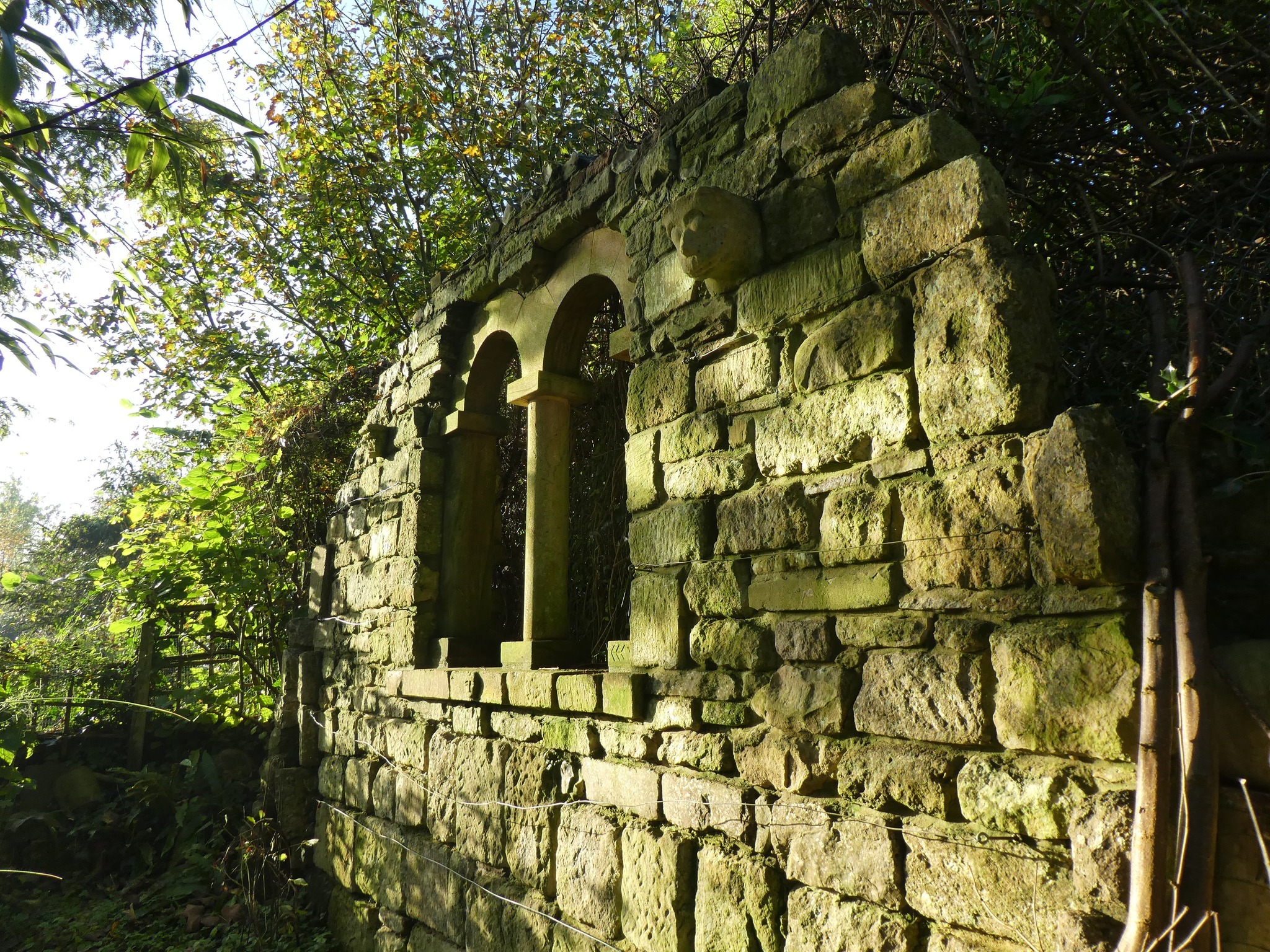
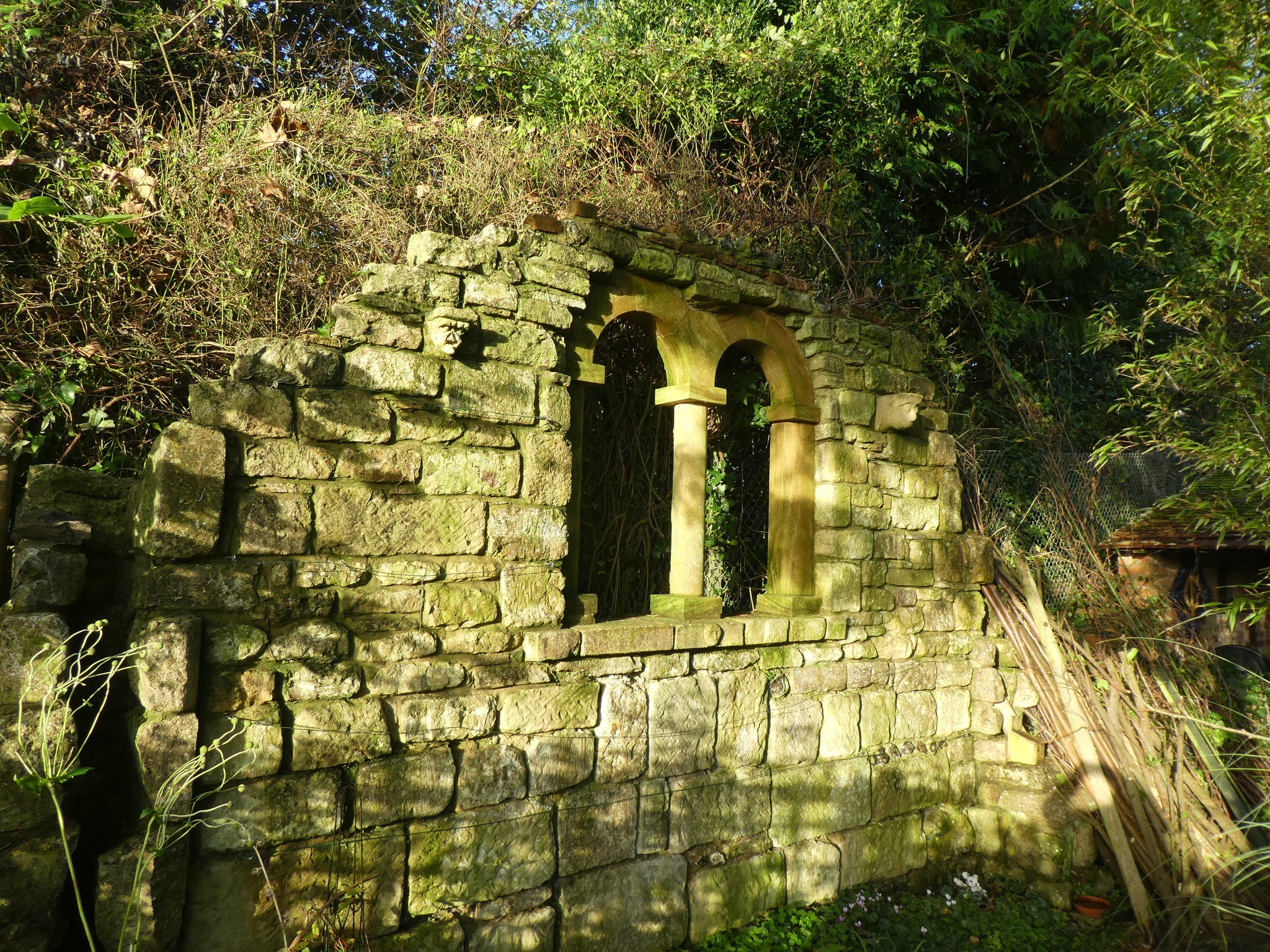 The gable is small and leads one to suspect that the rest of the building was on that scale. This would correspond to the sort of building erected by, or for, a hermit containing both their chapel and their austere cell.
The gable is small and leads one to suspect that the rest of the building was on that scale. This would correspond to the sort of building erected by, or for, a hermit containing both their chapel and their austere cell.


 The gable is small and leads one to suspect that the rest of the building was on that scale. This would correspond to the sort of building erected by, or for, a hermit containing both their chapel and their austere cell.
The gable is small and leads one to suspect that the rest of the building was on that scale. This would correspond to the sort of building erected by, or for, a hermit containing both their chapel and their austere cell.The owners believe that a stone coffin was found buried close by bearing the inscription “Hic Iacit Santa Neverwasta” and that it was removed by a local antiquarian when the land was sold off for housing development by the Duchy of Cornwall in 1876.
The chapel does not figure on John Speed’s 1610 map of Dorsetshire, and its inset map of the county town, and must therefore have been abandoned and lost its significance some time before then. Fluctuations in the level of the rural population, principally caused by deaths resulting from the propagation of several epidemics of the plague in Dorset, including the Black Death, probably led to the abandonment of outlying churches and chapels, such as St Nicholas in Frome Whitfield (completely disappeared) and St German in Winterborne Farringdon (one gable end survives) in favour of churches closer to the centre of the town’s population such as Holy Trinity, St Peter’s and All Saints.
The Reformation, exacerbated by Dorchester’s puritanical town fathers, might well have led to the building being degraded, repurposed for agricultural use and/or robbed of its stone. Stone was then highly valued and was much in demand for the construction of new buildings and walls, as evidenced in many places in the town.
Given its location it is remarkable that it survived the construction in 1857 of the Great Western Railway’s line to Bristol. The wall, in fact, serves as a boundary marker between that railway track and the garden of its present owners. As noted above, when those owners purchased the house and land the precise boundary with the track was obscured by several metres of impenetrable vegetation combining brambles, saplings, sycamores and bushes which completely obscured the gable from view.
The style of the two light windows contained in the gable end marks it out to be of Norman style, thus dating its construction to the period from the late 11th century to the end of the 12th century. Two small corbels, decorated with masks, found on the site, have been placed on either side of the windows.
The church of Whitchurch Canicorum dates to at least the 12th century and it contains a simple tomb chest (Photo 3) containing the original lead casket within which are the remains of the Saint Wite.
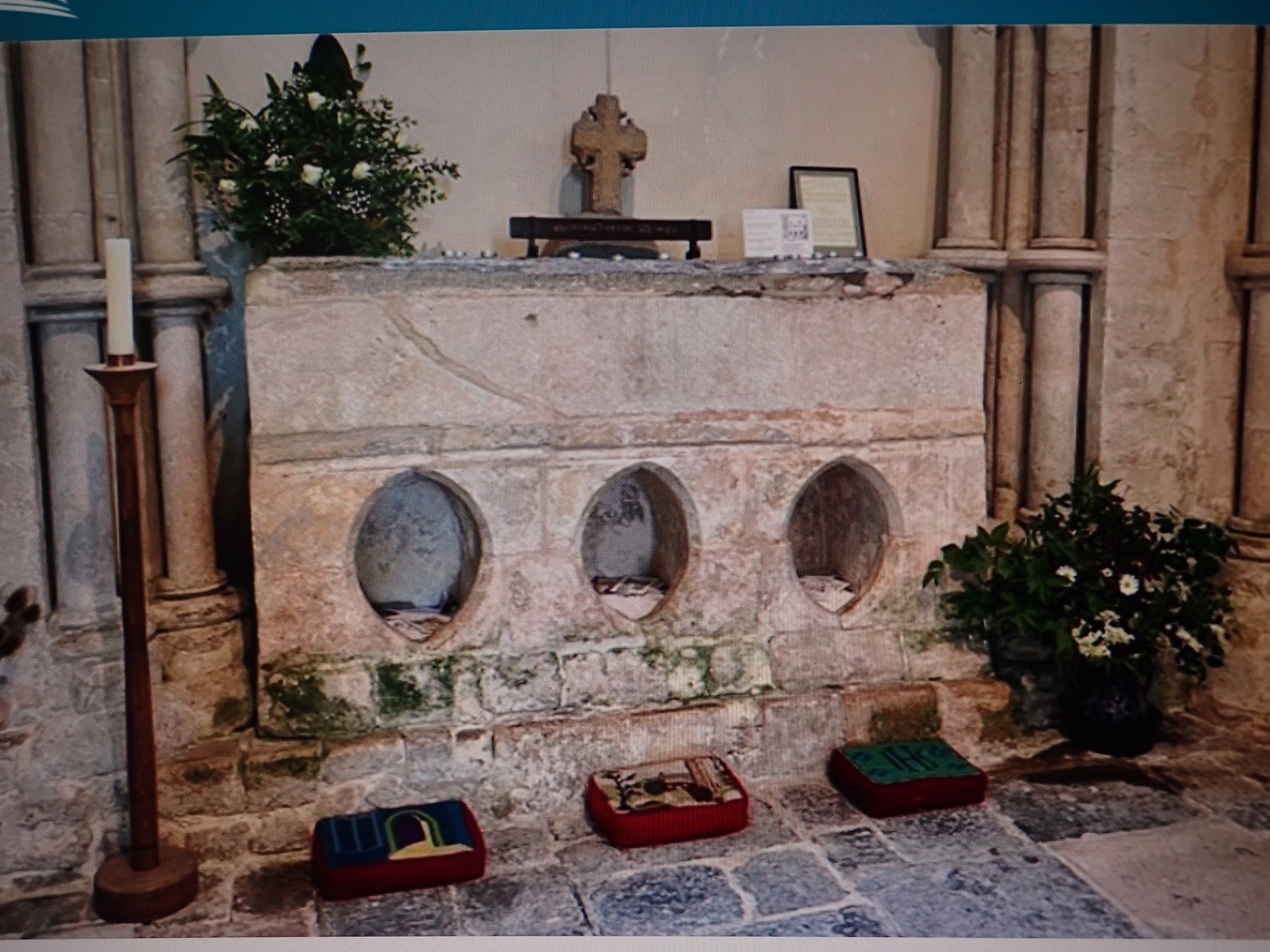 The base of the stone tomb is pierced by three holes which enable pilgrims to insert their afflicted limbs and touch the casket, in the hope of miraculous healing by the saint. The tomb is placed against the wall of the north transept and there are two apertures through the base of the wall which would have enabled lepers to touch the casket of the saint without entering the church.
The base of the stone tomb is pierced by three holes which enable pilgrims to insert their afflicted limbs and touch the casket, in the hope of miraculous healing by the saint. The tomb is placed against the wall of the north transept and there are two apertures through the base of the wall which would have enabled lepers to touch the casket of the saint without entering the church.The church was expanded and embellished over the centuries using the donations from the numerous pilgrims to the site and as a result is much bigger than necessary for what was a small village (Photo 4).
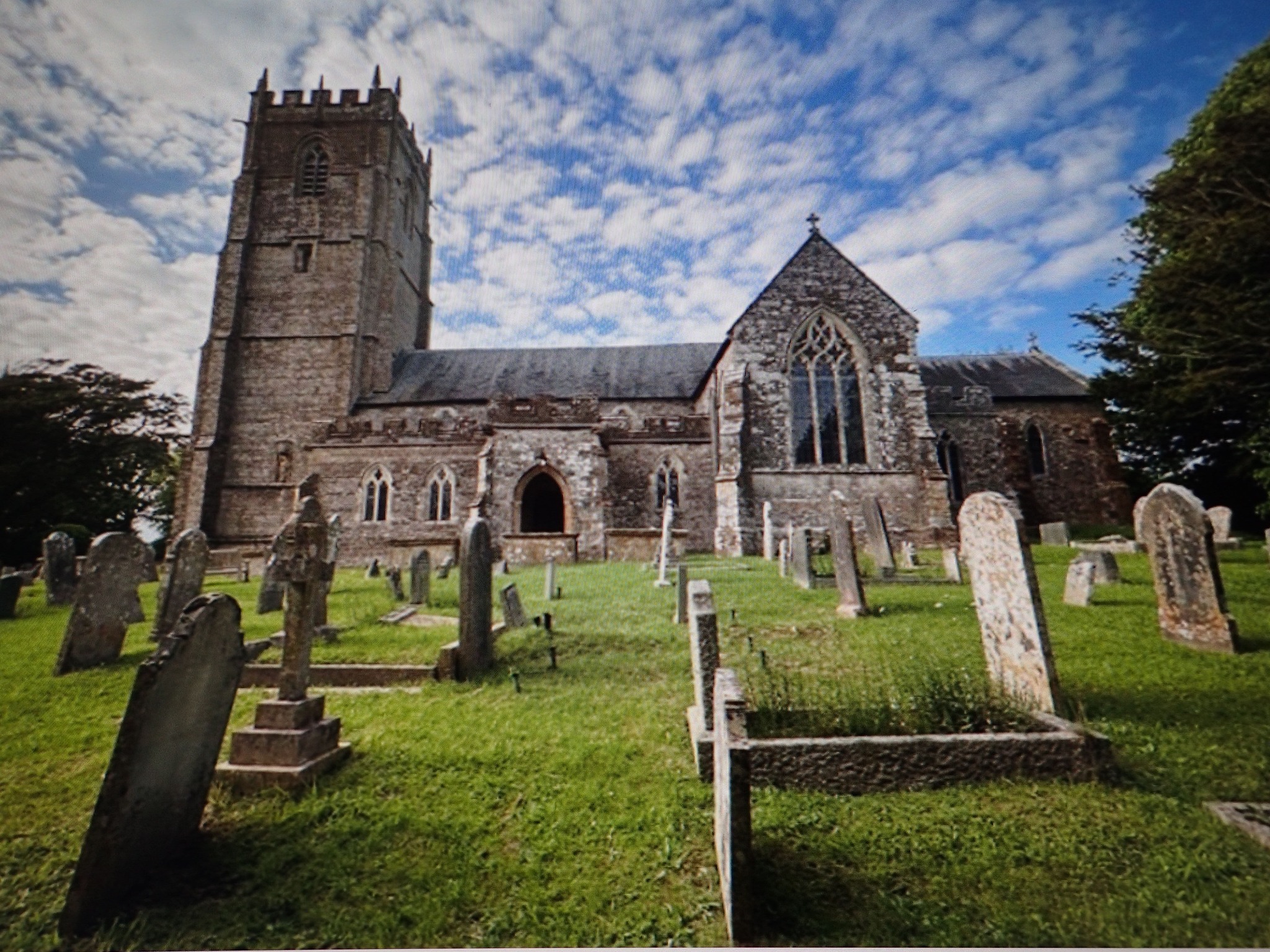 The fact that the tomb is of a simple design and bears no decoration or inscription dedicated to the saint probably preserved it from destruction during the Reformation. The inhabitants were also said to be attached to their saint and to have remained Catholic for a considerable time and this would have led them to conceal its nature to inquisitive visitors.
The fact that the tomb is of a simple design and bears no decoration or inscription dedicated to the saint probably preserved it from destruction during the Reformation. The inhabitants were also said to be attached to their saint and to have remained Catholic for a considerable time and this would have led them to conceal its nature to inquisitive visitors.The casket was opened in 1900 and found to contain the bones of a small 40-year-old woman and an inscription in Latin “Hic requiescunt reliquiae Sancte Wite” identifying the saint. According to local legend St Wite, or Whyte, was as a hermit living in the 9th century in a simple hermitage on the coast and possibly tending a beacon to warn sailors of offshore hazards. She is said to have been killed by a Viking raiding party. There is a well on the cliff top nearby, known as St Wyte’s well near to where the hermitage is said to have been, which contains fresh water which would have refreshed the saint and is reputed since then to cure eye infections.
St Wite ‘s feast day is 1st June, and she has been adopted as Dorset’s saint. Her feast day is Dorset day, and the Dorset flag represents her cross. St Thomas More mentions an ancient custom of offering her cakes or cheese on her feast day – a tradition which could be profitably revived and extended to all religious congregations in Dorset!
In England there are only a handful of saints’ tombs which contain their mortal remains. The most celebrated is that of Edward the Confessor in Westminster Abbey. Two other survivors are the tomb of St Bertolin, or Bertram, an 8th century king of Mercia, in LLam in Staffordshire and that of St Thomas de Cantelupe (1218-83) in Hereford Cathedral. Both of these are said to have had miraculous powers of healing. The chest tomb of St Thomas is much more elaborate and has recently been restored and embellished with a colourful canopy which reproduces what it may well have looked in medieval times (Photo 5).
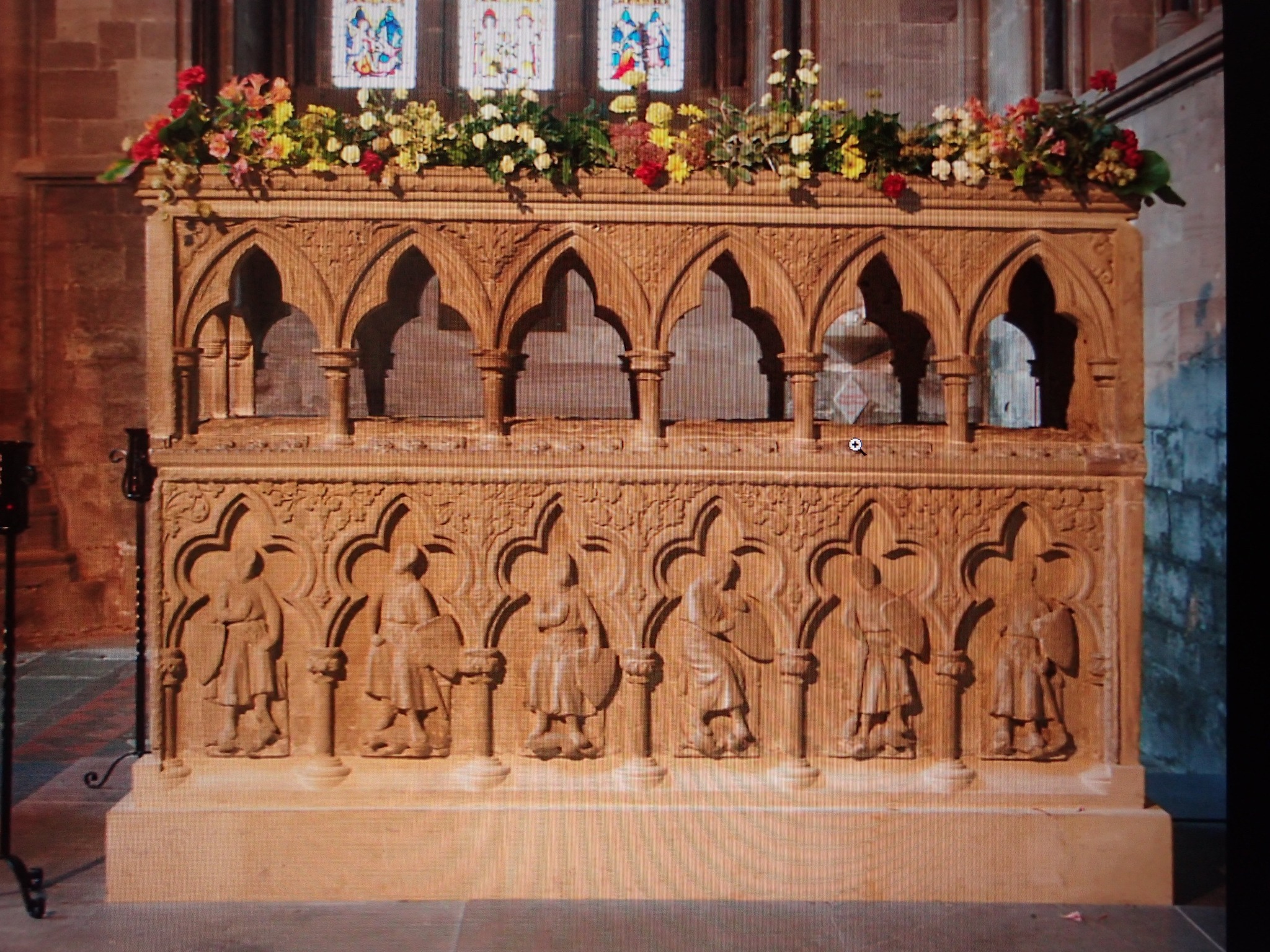 The discovery in Dorchester of the ruins of an early chapel, possibly dedicated to a Saint Neverwasta raises intriguing questions. Where is the stone coffin and the remains of the saint now? Was the saint male or female? At what period did the saint live – the Saxon consonance of the name may be a pointer? Why was the saint venerated?
The discovery in Dorchester of the ruins of an early chapel, possibly dedicated to a Saint Neverwasta raises intriguing questions. Where is the stone coffin and the remains of the saint now? Was the saint male or female? At what period did the saint live – the Saxon consonance of the name may be a pointer? Why was the saint venerated?It is quite possible that the Dorchester saint was also known by another name. As we have seen above, St Wite is also known as Whyte and Candida; she is also said to have been a Welsh or Breton 6th century saint called Gwen Teirbron (also known as Blanche, Wite and Candida), or even St Witta of Buraberg in Germany whose bones may have been gifted to the church in Whitworth Canicorum by King Athelstan. St Bertolin also lived in the Saxon era and is variously called Bertram, Beorhthelm, Bertelin and Bettelin. St Rumbold, to whom a chapel in South Street was dedicated, was also known as Rumwold, Rumwald and Rumbald.
The most probable change which may have occurred to St Neverwasta’s name is to that of “Westover” since that name was used for a road nearby and it is a common Dorset place name. There is some folklore reference to such a saint, and to her feast day being on 1st April, after adjusting the date from the Gregorian to the Julian calenda. However, I have been unable to find any historical evidence of such a saint.
A possible explanation is that she may have been an Anchorite, the strictest category of hermit, who lived in a cell adjacent to a chapel, with a small window to the outside world, and one to the altar in the chapel to enable her to assist in the celebration of the mass. Anchorites were holy women who took a solemn vow to live in seclusion walled up within their cells to the end of their days after assisting at a special service which included some of the rites contained in a funeral mass. They received their food from the local habitants and spent their time in contemplation and prayer for those inhabitants. They were also available to counsel and teach them the gospels and were accordingly venerated by them. The mere fact that a holy woman lived as an Anchorite did not qualify her for sainthood after her death, notwithstanding that she may have been venerated during her lifetime and beyond.
Can any history sleuth out there shed some light on Dorchester’s mystery saint and the present whereabouts of the coffin and of her bones?

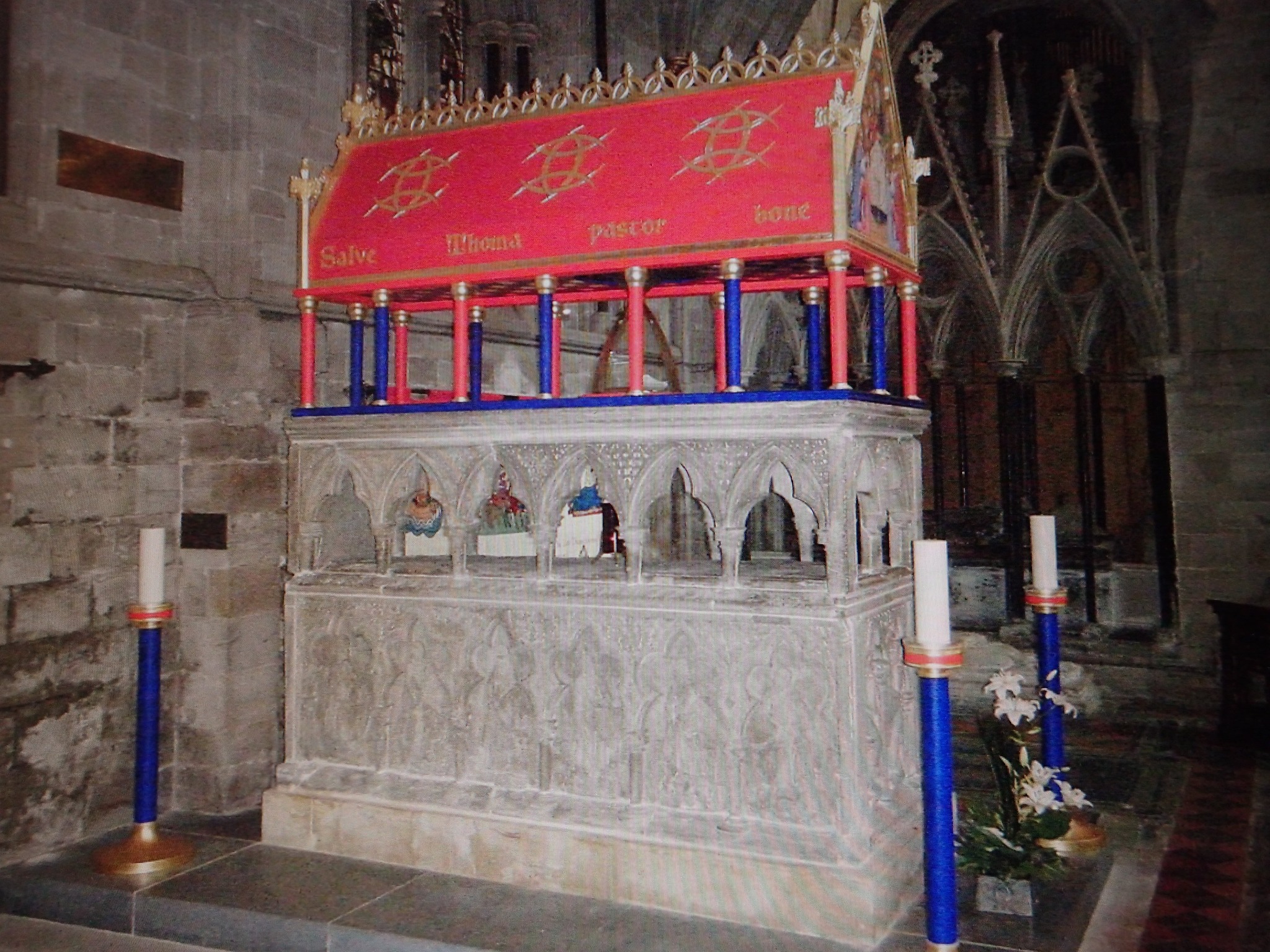
Recent Comments